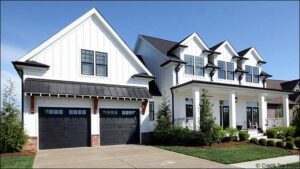A few years back, I was interviewed by a writer for MSN.com. For those interested, here’s the piece which, apparently, is no longer on their website.
10 Neighborhood Homebuyer Magnets
By Scot Meyer of SwitchYard Media
John Donne wrote that “No man is an island.” If he had been a real estate broker, rather than a 17th-century English poet, he might have added that no house is, either. Context is everything, and neighborhoods matter.
According to a National Association of Realtors survey released in November, homebuyers say that the quality of a neighborhood (cited by 67% of respondents) was the biggest factor in determining where in a given area they would buy. The next top responses were affordability (45%) and convenience to family and friends (39%).
If you’re a home seller, you should know that certain neighborhood features are like magnets for some homebuyers, generating interest in your house even if it’s the ugliest one on the block.
Here are 10 factors to keep in mind and emphasize in your home listing.
Access to transportation
The ability to get to and from their neighborhood easily is important to homebuyers. The NAR study found that being near public transportation is important to 8% of buyers. That increases to 20% for buyers in urban or central neighborhoods.
In addition, 49% of homebuyers say that finding a house convenient to where they work influenced their neighborhood choice.
Attorney, mortgage broker, and professor Dale Siegel says that easy access to transportation is particularly important in places such as New York City, where the difference between walking three blocks and 10 blocks to a subway station in the rain can be significant. But access can also be a selling point in suburban communities.
Siegel, who lives in Fort Lee, N.J., across the Hudson River from Manhattan, says that residents of her community appreciate that they can travel into Manhattan by bus or ferry and that they are near highways that can take them almost anywhere.
Good schools
School-district quality influenced the neighborhood choice of 27% of homebuyers in the NAR survey. That jumped to 55% for buyers with children younger than 18 but dropped to 13% for buyers without kids.
“One of the first questions I get from people relocating to the area is about the quality of the local schools,” says Cara Ameer, a real estate agent with Coldwell Banker Vanguard Realty in Ponte Vedra Beach, Fla. The issue is critical for people with children, she says. But it affects the resale value for buyers without children, too.
Nearby amenities
In a recent Coldwell Banker survey of real estate agents, 68% say that their baby boomer clients sought proximity to restaurants and shops when looking for a home.
Siegel says the presence of these amenities signals that an up-and-coming urban neighborhood has “arrived.” “An area like Manhattan’s Lower East Side can become the hot new place to live, and everyone wants to move in,” Siegel says. “But that designation becomes more permanent when the services become available.”
Access to staples such as grocery stores and dry cleaners is important in suburban and exurban neighborhoods, as well.
Siegel says her brother chose to live in Surprise, Ariz., outside Phoenix, because of “the choice of stores, restaurants, and other businesses within five miles of his house.”
Area architecture
In some neighborhoods, historical or architecturally significant homes can be a big draw for certain homebuyers.
“Other buyers are less specific,” Ameer says, “but they might tell me they’re looking for a neighborhood with character and charm or one that doesn’t look like the typical subdivision.”
Siegel points to Ridgewood, N.J., which has neighborhoods with Tudor-style homes and large yards, as the kind of community that would appeal to that kind of buyer. “Aesthetically, the town might be more desirable than places with cookie-cutter corner lots,” she says.
The NAR survey found that home design in a neighborhood is a consideration for 32% of homebuyers.
Reputation
Buzz about a neighborhood can translate into buyer interest and higher sale prices, real-estate agents say.
“It’s an interesting marketing phenomenon,” says Tre Pryor, a real estate agent in Louisville, Ky. “When an area becomes branded as the hot neighborhood, that reputation tends to stick, even though often it’s only 80% based on reality and 20% based on what people have heard or read.”
In Louisville, this is the case in the Highlands neighborhood, Pryor says. “It’s amazingly popular, and because of that, some neighboring communities have co-opted the brand and use it for themselves, even though they’re not technically part of the same area. It’s gotten to the point that the Highlands has started calling itself the ‘original Highlands.’”
Parks and outdoor spaces
Prospective homebuyers often appreciate having a park nearby, especially if they have children or pets, Ameer says. She also says that in her market, just outside Jacksonville, Fla., golf courses have appeal.
The NAR survey found that 18% of homebuyers say proximity to parks and recreation facilities influences their neighborhood choice. Among households with children, the number increases to 23%. For people buying homes in urban and central-city areas, it’s 22%.
Proximity to parks and recreation also has been deemed important by 34% of baby boomer homebuyers, according to Coldwell Banker’s survey of real estate agents.
Low crime rate
People want to live where they feel safe. A low crime rate is key.
“Clients do ask about it, and it does affect the home’s value,” Pryor says, adding that real-estate agents refer people to objective online sources of local crime statistics, rather than sharing their opinions about “good” and “bad” neighborhoods.
People often are swayed as much by a neighborhood’s reputation for crime and violence as by actual statistics, Matthew Kaliner of Harvard University said in a 2008 study. In the study, he says that in Washington, D.C., a slight increase in the number of crime- or violence-related newspaper articles about a neighborhood could mean a $1,300 to $1,700 difference in a home’s sale price.
Your neighbors
The people who live in a community are important to home seekers, of course. But generalizing about what sort of neighbors make an area appealing is tricky. Research suggests that conservatives tend to like to live among conservatives and that liberals like to live among liberals, for example.
One factor to watch may be how long people have lived in the area. A study on neighborhood satisfaction and reputation from the journal Urban Studies in April noted that residents “who are satisfied with their neighborhood are thought not only to be less likely to move but also to have a higher general quality of life.”
“Buyers always want the neighborhoods where there are the least amount of properties for sale,” Ameer says. “That’s very telling because if people aren’t moving, they’re probably happy there.”
Local economy and stable home values
A home is a big investment, so buyers naturally are attracted to neighborhoods where property values are likely to go up rather than down. That means they may find a community without foreclosures or distressed properties more attractive. Pryor says that these neighborhoods are likely to see more sales and higher sale prices.
The market’s overall economic health also matters to homebuyers. Pryor wrote in a blog post last spring that the unemployment rate in Louisville is a major factor in market activity there. When more people are out of work, fewer people buy homes — and when jobs are plentiful, people move around.
Proximity to cultural experiences
Author and urban studies theorist Richard Florida says members of a “creative class” — people whom cities want to attract and whom companies want to hire — prefer to live in neighborhoods with ethnic and cultural diversity, as well as easy access to nightlife, recreational facilities and the arts.
Convenient access to entertainment and leisure activities is a consideration in neighborhood choice for 21% percent of homebuyers, and 24% of unmarried couples, according to the NAR survey.
“People who want to be close to art galleries or other cultural amenities will definitely factor that into their search,” Ameer says, adding that Coldwell Banker’s website has a Lifestyle Search tool that can help people find neighborhoods that are hip, artsy, and trendy.



